Minecraft guide: How to find and mine diamond, gold, and other rare ores
Fill a chest with every kind of ore in Minecraft.
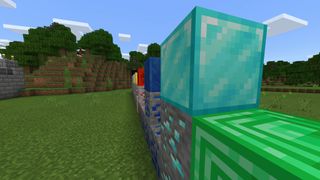
A large part of any Minecraft player's life is searching for the valuable ores that open up a whole new world of tools, weapons, and resources. Whether it's as simple as powering your furnace, or supplying an entire house with automatic doors and lanterns, being able to know where to find these ores (and how to get them) is essential to mastering this creative game. It's okay. We did the searching for you. So here's our guide on where to find all the valuable ores in Minecraft.
Where to find all the ores in Minecraft
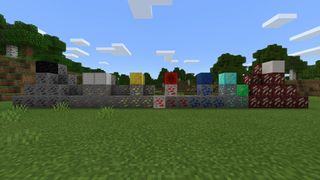
There are a total of 8 different ores currently available in Minecraft, all with varying levels of rarity. These ores appear in veins of different sizes, and some of these ores can only be found in specific locations. Knowing where to look to find your ores and how to mine them efficiently is most of the battle.
Minecraft generates worlds by numbering each block, with the bottommost level of bedrock being labeled as block 0, and each subsequent block afterward raising that number by one. This includes bedrock, air, and basically everything in between. Knowing this, it becomes much easier to know where to go to find ores. Minecraft considers sea level to be at block 62, and clouds start generating at block 128. Most ores are found below sea level, and no ores will be found above cloud level.
Coal

- What depth is coal found at? Between blocks 5 and blocks 128.
- Where is coal found at? Every biome in the Overworld.
- Can coal be condensed? Yes, with nine pieces of coal.
- Does coal need to be smelted? No, coal does the smelting.
- What tool do you need? Wooden pickaxe or greater.
Coal is by far the most common ore, to the point that most veteran Minecraft players will genuinely ignore coal after a certain point in the game. While extremely useful, it is very easy to build up a large amount of coal relatively quickly. Coal is used primarily to power furnaces and to craft torches, so it's handy to find early on in the game. Coal is prevalent in every biome in the Overworld and is the only ore that can be regularly found above sea level, meaning you'll even find this common resource inside mountains. It also generates in huge veins, so players can often get nearly entire stacks of coal from a single spot.
Iron

- What depth is iron found at? Between blocks 5 and blocks 64.
- Where is iron found at? Every biome in the Overworld.
- Can iron be condensed? Yes, with nine iron ingots.
- Does iron need to be smelted? Yes, iron ore is smelted into iron ingots.
- What tool do you need? Stone pickaxe or greater.
Iron is arguably the most useful of all the ores in Minecraft, because of its importance early on in the game, its accessibility, its many varied uses, and the fact that it can't be substituted like coal can with charcoal. It is used to make anything from weapons, tools, armor, rails, buckets, and much more. Iron is the second most numerous ore found in Minecraft, so players later in the game will likely have chests full of the stuff. You can never have too much iron, though, since it never entirely ceases to be useful to build cost-efficient tools that still get the job done every time. Iron can generate in veins as much as 12 to 20 blocks of ore in a vein but more commonly generates in groups of 4 to 6.
Gold
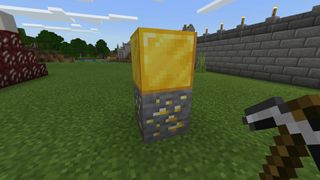
- What depth is gold found at? Between blocks 5 and blocks 29, or blocks 80 in badlands.
- Where is gold found at? Every biome in the Overworld, but especially badlands.
- Can gold be condensed? Yes, with nine gold ingots.
- Does gold need to be smelted? Yes, gold ore is smelted into gold ingots.
- What tool do you need? Iron pickaxe or greater.
Gold has limited use to players early on in the game due to is frailty in use in weapons, tools, and armor. However, late-game players will recognize its value in redstone contraptions, clocks, and the crafting of powerful food items like golden apples. Gold is a frequent reward in chests found in strongholds, dungeons, abandoned mines, and the Nether, but can also be mined. It's definitely worth grabbing when you see it because gold is relatively rare in the game. Minecraft is also planning a major update to the Nether that will add new mobs and a new trading system heavily involving gold. In a badlands biome, gold can actually be found above ground and in exposed abandoned mineshafts, up to blocks 80. It's one of the rarer ores in the game, found typically in veins ranging from 2 to 4 ore blocks.
Redstone
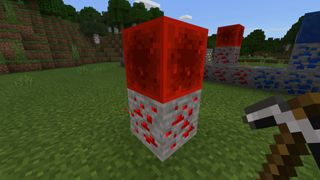
- What depth is redstone found at? Between blocks 5 and blocks 15.
- Where is redstone found at? Every biome in the Overworld.
- Can redstone be condensed? Yes, with nine pieces of redstone.
- Does redstone need to be smelted? No, redstone only needs to be mined.
- What tool do you need? Iron pickaxe or greater.
Redstone is an ore that very quickly takes up inventory space for players who weren't looking for it but is invaluable to Minecraft players who are invested in its use. Used in a nearly infinite number of machines, contraptions, and more, redstone is the equivalent of electrical wiring in Minecraft. It's necessary for almost anything that moves and is important for any player looking to make their operations more efficient or their builds more advanced. Redstone spawns in relatively large veins, and a single block of redstone ore drops multiple bits of redstone at a time, rather than just one.
Get the Windows Central Newsletter
All the latest news, reviews, and guides for Windows and Xbox diehards.
Lapis lazuli

- What depth is lapis lazuli found at? Between blocks 14 and blocks 23.
- Where is lapis lazuli found at? Every biome in the Overworld.
- Can lapis lazuli be condensed? Yes, with nine pieces of lapis lazuli.
- Does lapis lazuli need to be smelted? No, lapis lazuli only needs to be mined.
- What tool do you need? Stone pickaxe or greater.
Lapis lazuli has a strange name and a rather limited number of uses but is still valuable to have around and a necessity if you want to power up in Minecraft. Its more mundane use is in crafting blue dye, but more importantly, lapis lazuli is a crucial ingredient in enchanting all of your equipment. Every enchantment requires a bit of lapis lazuli to finalize, so this ore is one you won't want to pass by lightly. Lapis lazuli actually generates in a similar fashion to redstone, in decently sized veins that drop multiple bits of lapis lazuli with each block mined. That also means you can find your inventory taken up predominantly by lapis lazuli in a moment, so condensing it down as you go is never a bad idea.
Diamond
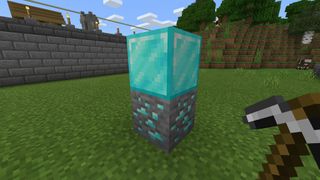
- What depth is diamond found at? Between blocks 5 and blocks 12.
- Where is diamond found at? Every biome in the Overworld.
- Can diamond be condensed? Yes, with nine diamonds.
- Does diamond need to be smelted? No, diamond only needs to be mined.
- What tool do you need? Iron pickaxe or greater.
Ah, diamond. The search for diamonds in Minecraft has occupied a special place on the internet for many years, be it in the form of memes, songs, or articles just like this one. Possessing diamonds is like being inducted into the elite in Minecraft, and means you can finally think about things like the Nether and the ender dragon. Diamond can be used to craft all manner of tools, weapons, and armor, in addition to being used to craft enchantment tables and a handful of other things. It's incredibly rare, very special, and a must-have for any longterm Minecraft player. Diamond veins are far more infrequent, are typically smaller, and drop less than redstone, despite spawning in a similar area. Diamond veins are usually 2 to 4 blocks, and each block of diamond ore will only drop a single diamond. This makes them a fair sight harder to find and makes it doubly important to use diamonds sparingly.
Emerald
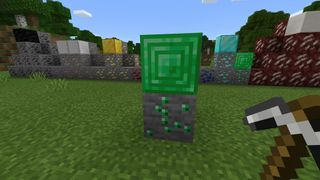
- What depth is emerald found at? Between blocks 5 and blocks 29.
- Where is emerald found at? The mountains biome in the Overworld.
- Can emerald be condensed? Yes, with nine emeralds.
- Does emerald need to be smelted? No, emerald only needs to be mined.
- What tool do you need? Iron pickaxe or greater.
When asked what the rarest ore in Minecraft is, many people may be tempted to say "diamond." Those people would be wrong. While diamonds are rare for sure, there is one ore that is even more so: emeralds. Emeralds are the newest ore on this list and are only used when trading with villagers. This makes their value subjective to the player since how important they are depends on how important trading is to you. Either way, emeralds can be gained by trading, finding them in chests, or mining them. Before you go off to search for them, however, there is a huge limitation on where emeralds generate. The mountains biome is the only biome in which emeralds will spawn, drastically reducing how common they can be. Emerald veins are also infrequent, and they are never larger than a single block of ore at a time. Even in optimal conditions, a single cave in a mountain biome is still more likely to have higher numbers of diamonds than emeralds.
Quartz
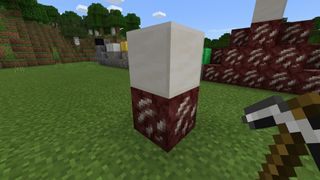
- What depth is quartz found at? Between blocks 15 and blocks 120.
- Where is quartz found at? The Nether.
- Can quartz be condensed? Yes, with four pieces of quartz. This is irreversible.
- Does quartz need to be smelted? No, quartz only needs to be mined.
- What tool do you need? Wooden pickaxe or greater.
Quartz may be at the bottom of this list, but that does not mean it's the rarest ore in Minecraft. Far from it, in fact, quartz is extremely common in the places that it can be found. The issue is that quartz can only be found in the Nether, making them a late-game resource for players who have already found diamond or have tricked their way into the Nether. Quartz is used mostly for building but is also used in a handful of crafting recipes, usually involving redstone. It can be condensed into quartz blocks with four bits of quartz, meaning it can be done without a crafting table. This move cannot be reversed, though, so it's not useful for storage. Quartz veins are pretty common and can sometimes rival those of coal in terms of size and depth. Quartz also drops experience points more frequently than coal, so it can be quite useful for players who need to accumulate levels for enchanting.
How to mine all the ores in Minecraft

Just knowing where to find all the ores, or what to do with all of them isn't enough to be a pro at mining. There are tips and tricks to maximize your hauls and fill entire storerooms with all kinds of ores and resources. Our guide to mining in Minecraft is considerably more in-depth if you need the full scoop, but we still have a few things up our sleeves in this guide.
First things first, your equipment. Here's what you'll need:
- A great pickaxe. Iron is the lowest grade pickaxe I would recommend since it's easy to make, can mine every resource listed above in this guide, and has respectable speeds.
- Lots of torches. Most of the ores on this list are found underground, and the ones that can be found aboveground are still more numerous below the surface of the earth. Spoiler: caves are dark. Bring torches.
- Some wood. Wood is required for a lot of crafting, most notably including but not limited to, crafting tables, tools like pickaxes, and torches. All of this is necessary for mining, so it's never a bad idea to have a stack of wood in your inventory.
I also highly suggest looking into getting the Fortune enchantment for your pickaxe. This fantastic enchantment can increase how much an ore block drops when it's mined. You can get up to 4 diamonds with a single diamond ore block, for example. This is a late-game upgrade, but it's incredibly useful to increase your yield and make mining much more efficient.
Other than that, general supplies like some food and something to protect yourself isn't a bad idea to have around. As long as you nail these essentials, you're set and ready to mine. Speaking of that, it turns out there are two main ways of mining, each with their own advantages: strip mining and cave spelunking.
Strip Mining
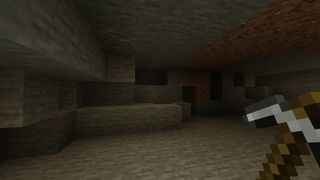
Strip mining is straightforward. Mine down to a certain depth and simply mine everything in the area. You can either mine a series of tunnels, mine a huge cavern that extends far off into the distance, or simply seek to destroy everything. It's mindless work with little excitement, but it is effective and often more convenient. Strip mining is time-consuming and comes with its own set of pros and cons that are usually opposite of cave exploring.
The pros of strip mining include:
- Gathering large amounts of resources. If you need a ton of stone, dirt, or other underground resources for a big build you're planning, there's no better way than strip mining.
- Staying at the optimal depth. Unlike caves, which typically take you up and down in elevation constantly, strip mining allows you to stay at the perfect depth to find things like diamonds.
- Strip mining is safer. Exploring caves comes with its own set of hazards like sporadic drops, hostile mobs, giant pools of lava, and more. Strip mining is boring but predictable. You empty your inventory of everything but your pickaxes and get to work.
- You stay close to home. Another advantage of strip mining is convenience. You can build a strip mine right in your basement without having to search far and wide or travel long distances to look for what you need.
- Strip mines often lead to great caves. Good caves that offer an acceptable yield are hard to come by, and many of them are hidden completely underground with no entrance to the outside world. Strip mines can often intersect with some of the caves.
The cons of strip mining include:
- It's an inefficient method. Strip mining is mining through brute force rather than finesse. Sure, you're practically guaranteed to find everything you're looking for eventually. You could also fill three chests with cobblestone and go through a dozen pickaxes before finding a single diamond.
- It's time-consuming and tedious. I've mentioned it before, but strip mining isn't really fun. It's the closest Minecraft gets to a grind, and that means many people might not have the patience to do it for any length of time.
- It can be frustrating. While strip mining is pretty straightforward most of the time, pools of lava and underground lakes can still interrupt your process.
Spelunking
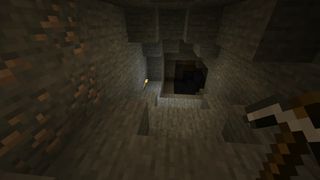
Exploring caves is the tried and tested method to find all the ores in Minecraft, and it works well. This is arguably the more efficient way to mine, and it's more enjoyable too. Find a cave, load up on supplies, and be pseudo-lost for hours in the labyrinthian series of passageways and crevices. Just like strip mining, cave spelunking has its fair share of pros and cons.
The pros of cave spelunking include:
- It's easy to find resources. Caves put most of their valuable ores right on the surface, so looking for diamonds and iron is as simple as exploring the cave.
- Resources are plentiful. Caves also usually have a ton of resources to mine, so you can get a lot in a short amount of time.
- You're not weighed down by unwanted materials. With strip mining, it's basically impossible to get to the good stuff without filling your inventory with cobblestone, dirt, gravel, and everything else that exists underground. Caves let you be more focused.
- It's more entertaining. This is a little subjective, but navigating through caves scouring every surface for valuable resources, while simultaneously fighting off any would-be attackers is a fair bit more fun to most than just bleakly mining a tunnel.
The cons of cave spelunking include:
- It's far too easy to get lost. Caves are sporadic and chaotic, with the larger ones having dozens of passages and spin-offs that spiral way into the abyss forever. If you're not careful, you can easily get lost for hours. I suggest picking a wall and always putting your torches on that wall so that getting back is as easy as following the torches.
- Caves aren't always profitable. Larger caves may be awesome for mining, but some caves will fool you into thinking they're complex systems before tapering off twenty blocks from the entrance, while a lot won't even make that attempt. It can be hard to find a truly awesome cave to explore.
- Caves can be difficult to find. An extension of the last point, caves, also need to be discovered rather than created wherever you are at the time. Finding a cave while you're exploring is one thing, but actively looking for a cave and not finding one for ages can be frustrating.
If you're trying to decide which method of mining is superior, the answer is neither. Both options are great at what they do and are useful in different situations. My suggestion? Don't hesitate to explore the caves when you find them, but have a strip mine back home that you can fall back on if you're in need of some resources. No matter which one you choose, you're bound to find every ore Minecraft has to offer.
Getting to the bottom of it
There are a ton of versatile resources to discover and use that put the "mine" in Minecraft. Sometimes you have to search far, and occasionally even travel to a completely different dimension, but every ore is one worth looking out for. Whether you're strip-mining the entire planet or exploring worlds to look for caves and ravines, the next batch of diamonds is right around the corner.
Have you found every ore in Minecraft? What's the largest haul you've ever gotten in one go? Sound off in the comments below!

Zachary Boddy (They / Them) is a Staff Writer for Windows Central, primarily focused on covering the latest news in tech and gaming, the best Xbox and PC games, and the most interesting Windows and Xbox hardware. They have been gaming and writing for most of their life starting with the original Xbox, and started out as a freelancer for Windows Central and its sister sites in 2019. Now a full-fledged Staff Writer, Zachary has expanded from only writing about all things Minecraft to covering practically everything on which Windows Central is an expert, especially when it comes to Microsoft. You can find Zachary on Twitter @BoddyZachary.
